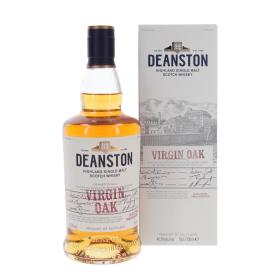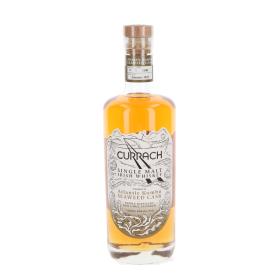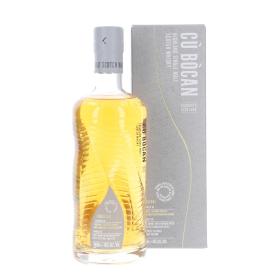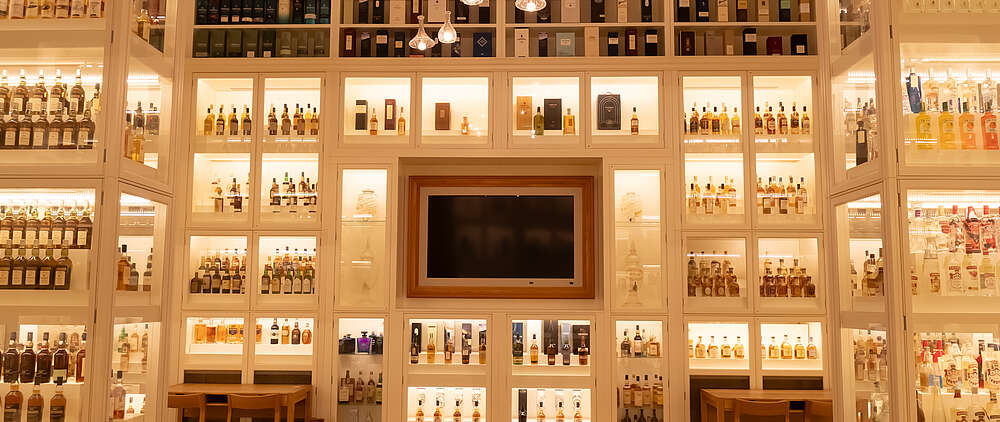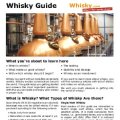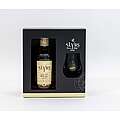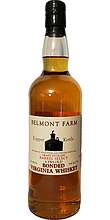Origin
Fresh white oak barrels, or 'virgin oak' barrels, are mainly used in the USA for whiskey maturation. This is because the American law (Bourbon Act) stipulates that whiskey must be matured for at least two years in fresh, burnt-out barrels made of American white oak. In the production of Scotch whisky, maturation in fresh white oak barrels is not so widespread. Usually a Virgin Oak cask is only used for a finish. Complete maturations are rather rare, as there is a risk that the oak will drown out the other flavours from the whisky.
Production
Virgin Oak casks have no other filling before the whisky is stored in them. They are made in the cooperage and then given directly to the distilleries. Mainly the species 'Quercus alba' (American white oak) is used for the barrels. This is because this species grows quickly and gives the whisky vanilla and caramel aromas. In addition, compared to the USA, there are not so many forests in Scotland and therefore not so much wood for barrels.
The purchase of a fresh Virgin Oak cask is a larger investment for a distillery than that of a used Bourbon, Sherry or wine cask.
Before the whisky is matured in the cask, the cask is toasted and burnt out. During toasting, the cask is heated to at least 150°C. This causes the cellulose to split. This causes the cellulose in the stave to break down into wood sugar, which begins to caramelise at these high temperatures. Only then does the cask release the familiar caramel, vanilla and coconut aromas into the whisky. During the subsequent burnout, you go directly into the cask with a large flame, which causes a dark layer of activated charcoal to form on the inner cask wall. This helps to filter out the pungent tastes and aromas from the whisky like an activated charcoal filter during cask maturation. During toasting and burning out, the distillery can vary the duration and thus depth of activation depending on the desired result.
Effect on the taste
A freshly toasted barrel releases a particularly large amount of vanilla and clove aromas (vanillin and eugenol) into the whisky. In the taste, vanilla, sweet ginger and coconut come to the fore. Due to its intense oak notes, Virgin Oak makes younger whiskies (without an age statement) seem more mature and gives them more depth. But this is also the crux of Virgin Oak: as these strong oak notes sometimes mask the rest of the aromas, complete maturations are rather rare. However, a finish can add an interesting dimension to the whisky bouquet. The result ultimately depends on the skill of the blender.
Effect on the colour
The caramel, which is produced by toasting and burning out the barrel, gives the whisky its dark colour. We know this from American whiskey, which is very dark although it is usually only matured in the barrels for two to four years. The dark colour comes to the whiskeys from the cask alone. This is because a fresh barrel not only has more aromas to give off, but also more colour than a refilled one.
For this reason, Scotch whisky usually turns out much lighter when ex-bourbon casks are used. Much of the colour has already been transferred from the oak to the bourbon. Virgin oak casks, even when re-matured, result in a darker colour for Scotch whisky.


